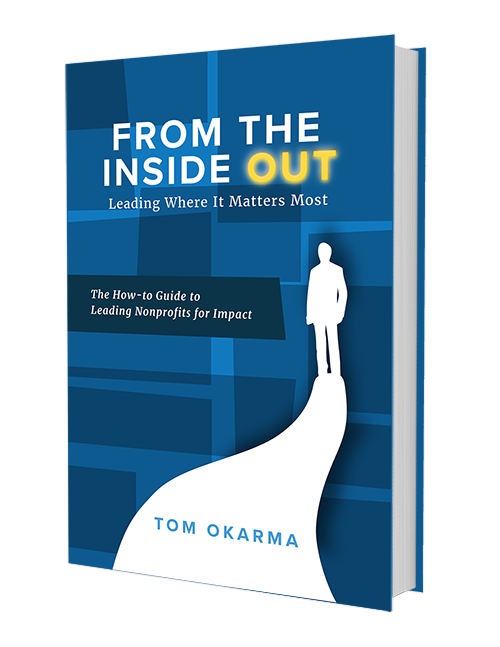When we think Leadership Development, we often think of others first… But sometimes we over look a critical element — knowing ourselves…
When I first became the CEO of an organization, I was very excited and confident. I knew what needed to be done and was quite comfortable in my abilities to provide the leadership necessary to lead the organization to new levels of success.
I was on cloud nine.
I figured I knew the company inside out. I was friends, or at least a friendly acquaintance, with many of its employees and other key partners. I had worked within it and at one of its key partner organizations for many years. I understood its mission, vision, values, and culture. I felt I knew how to make it even better.
Piece of cake, right? Not so much.
I quickly learned that certain areas of the organization in which I had little to do with in the past, I was now ultimately responsible for.
Questions, sticky issues, conflicts, personnel problems, and significant decisions came at me like I was traveling through a star field at warp speed. These were not insignificant ones either, so I had to step up and lead in front of a lot of people.
On top of all that, a few of the employees had been mentors of mine, which really complicated matters when I was faced with decisions that directly impacted them.
This all happened in just the first few days. Yikes!
Before long, I called a meeting of my ten direct reports, partly because that’s what leaders are supposed to do, right?
Sitting at the head of the table instead of somewhere in the middle like I had previously been was really eye-opening. All of a sudden this organization that I thought I knew so well looked very different to me. What I saw was:
- People who I knew were gifted and effective in their roles
- People who did not need any hand-holding
- People who did not especially want me to micro-manage them or volunteer my opinion on issues they were facing
- People who were much more knowledgeable in their respective areas than I was (finance, Human Resources, legal, etc)
- People who I wanted to succeed because I understood that if they succeeded, both the company and I would succeed
All of this led me to a huge aha moment. As I looked at my new assignment as CEO, I discovered I had several blindspots when assessing my leadership competencies. I needed to work on my leadership development, and put some serious effort into it. It became clear to me that my role was not to cast a big shadow, but to become a leader who helped others do their job better. Some call this being a servant leader.
It also became clear to me that the technical and marketing skills, even the good people skills I had, were no longer enough to handle the challenges I would soon face. I needed to step up and equip myself for this assignment in ways I had not imagined.
In other words, I could no longer simply rely on the skills and competencies that got me there. I had to learn new ones so I could keep up with and support these leaders. I realized that a big dose of leadership development was required.
I needed to equip myself differently so I could provide the type of leadership they needed, not just the type of leadership I already understood and had been ready to provide.
I had to go to work and develop certain areas of my own leadership skills and competencies so I could provide what the team needed. It was not about me, it was all about them.
Once I completed my self-assessment and understood what my leadership needed to look like, I was able to build a bridge to my new self through training, reading, seeking out other experts, etc.
Leadership development is not a one time thing, it’s a constant discussion to have with yourself.
What could you be doing better?
I have a couple extra suggestions to help you better understand your leadership position:
One way is to simply ask your team a few questions:
-
-
- “What do I do that helps you do your job better?”
- “What do I do that gets in the way of you doing your job?”
-
Next, dig a little deeper.
-
- Undergo a formal 360 Review
- Make a list of the major activities and responsibilities you have and rank them in order of how knowledgeable and comfortable you are in your performance. Work on improving yourself in the three lowest rated areas. Create a new list annually.
- If possible, ask your predecessor to think back and tell you what he/she wished they had known or been more proficient at doing when they started that same job.
Knowing where I was strong and where I was weak aided me in taking the appropriate steps to becoming a better, more effective leader, making life much more pleasant for everyone involved.
Ready to Lead Your Nonprofit Better?
From the Inside Out can you help you create a bigger impact with your agency. Discover how to lead yourself, your team, and your board. Put it all together and learn how to successfully lead positive change. Download Chapter 1 free!


